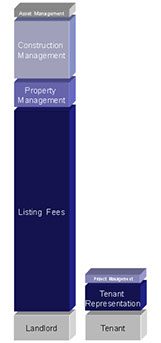You may not realize that commercial real estate leasing considerations and IT have much to do with one another, but converting to electronic healthcare records (EHR) can bring the connection to light. The process puts more demand on your IT infrastructure, and your ability to successfully complete the conversion to an EHR can be impacted by how your lease is written. So as you consider the current incentives and future requirements of converting to an EHR, you should also make sure that you are fully aware of how your lease may impact this process. Below are a few of the key provisions to be professionally evaluated as part of the process of converting to EHRs.
Alterations: If you make changes to your filing room, what steps will you have to take – both with your landlord and the applicable permitting authority to ensure code compliance? Do you need the landlord’s consent; what conditions will the landlord place on their approval? What if the changes are only cosmetic; does that change anything? Will you have to restore the changes? How and when will you know what you have to restore?
Infrastructure: If the EHR servers will be on-site, there are numerous considerations for the room that will house the equipment. Even if you currently have a room that is dedicated to IT equipment, the change to EHR may put more importance and stress on that space. Considerations include calculating the required cooling, floor load, security, electrical (capacity/dedicated outlets) and landlord access rights.
Operating Expense Passthroughs: Landlords often give themselves the right to submeter both the premises and certain equipment. Understanding the process through which landlords may measure and submeter is important when you are getting ready to change the use of a filing room, install millwork for tablets, or increase the capacity to your server room. Key considerations include studying the impact of submetering on additional rent and ensuring that the landlord doesn’t double count utilities.
Space Measurement: The architectural work that will likely be required to obtain a permit to convert filing space to another use (i.e. another revenue-generating exam room) is an expense, but it also presents an opportunity to ensure that the rentable square footage measurement was determined correctly. What method of measurement was the landlord using? Was it verified? Many tenants focus on the Rate per Square Foot, but not the Square Foot component of the calculation – both have an equal impact on your actual rent.
Landlord’s Lien: Does your landlord have a lien on the personal property within your space? Many leases include this provision, and the important implication is that such a lien can inhibit your ability to finance key equipment, including servers.
In general, healthcare practices should be aware of the terms in their lease and how these terms (or requirements or conditions) may impact their business. EHR conversion brings many of these provisions to light, as your lease may impact both your ability to effectively convert your practice to an EHR and the associated costs of the conversion. A professional analysis of your lease will bring these considerations to your attention and help you make smart decisions as you move forward.
Depending on the circumstances, much can be achieved through competitive renegotiation. For those who do not have a professional tenant representative in-house, engaging a tenant representative with a medical specialty to perform the analysis is a key first step. The engagement signals to the landlord that you’re serious about having every option and deal structure professionally evaluated. The process starts with having your lease professionally abstracted and your operating expenses analyzed. The output will establish a baseline of rights and costs and help you evaluate the costs and impact of moving forward with the conversion.
